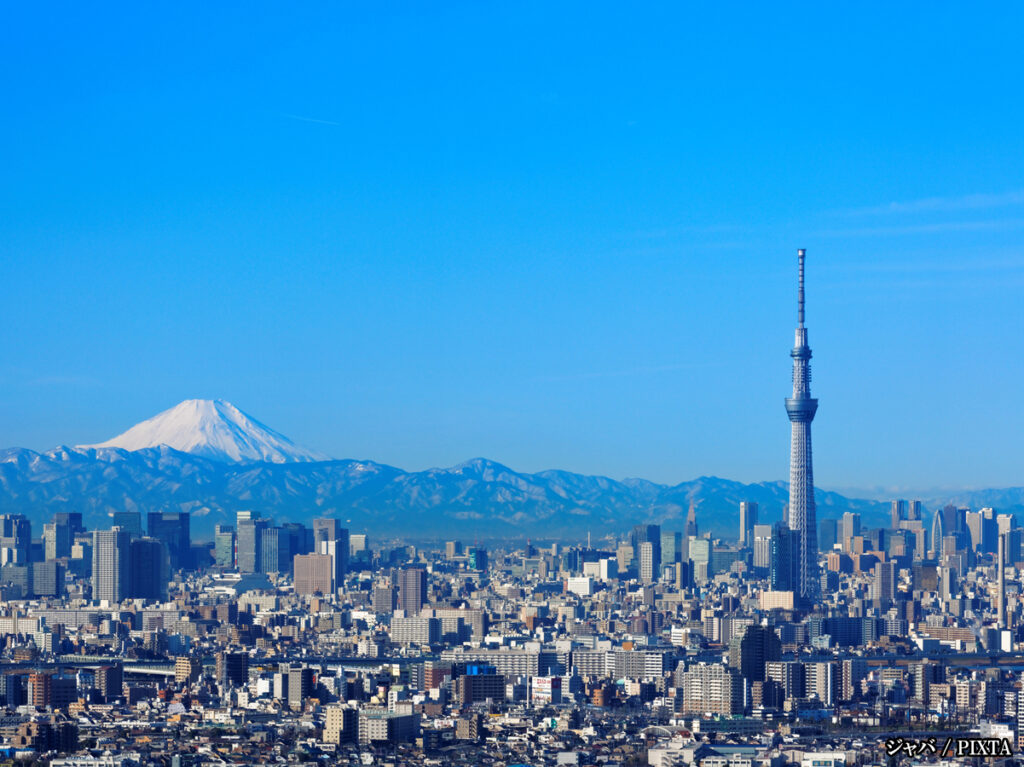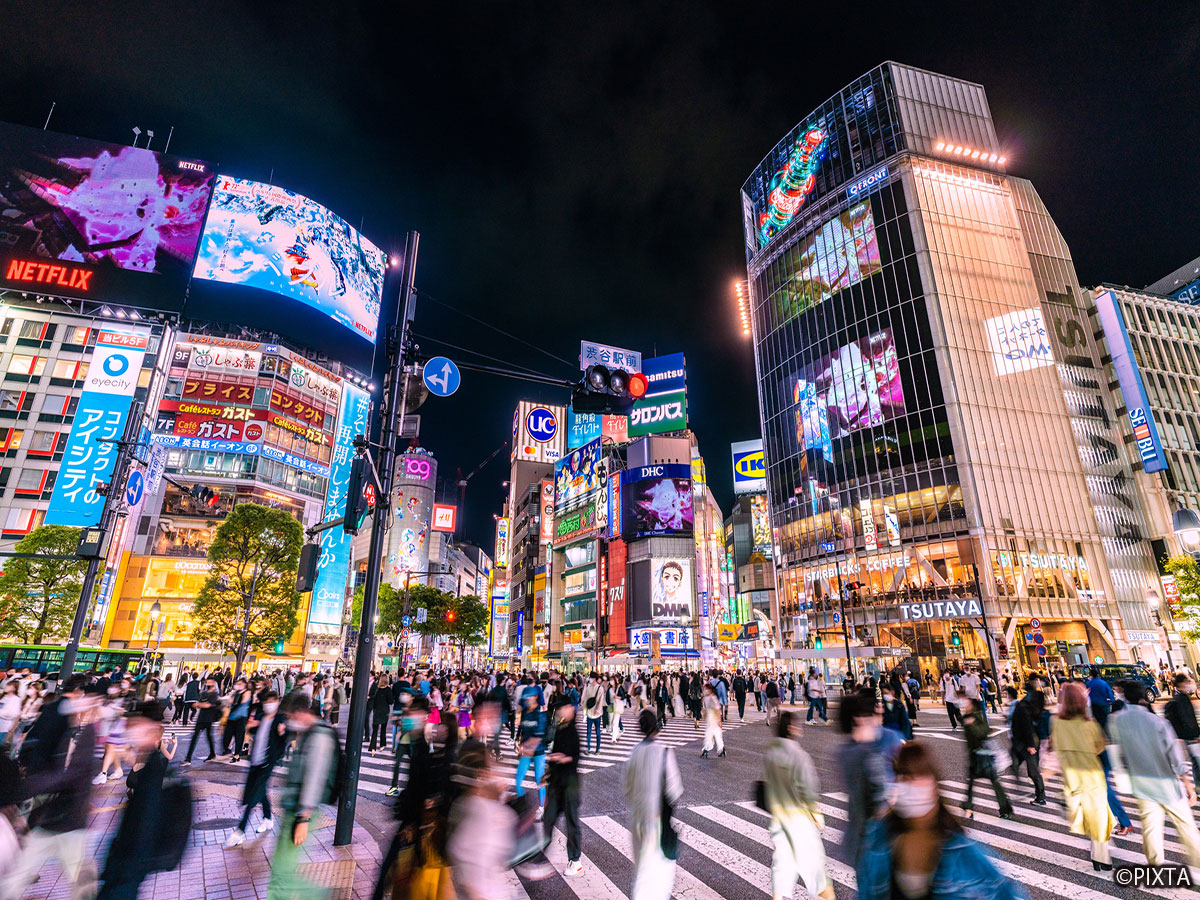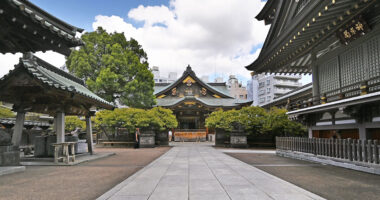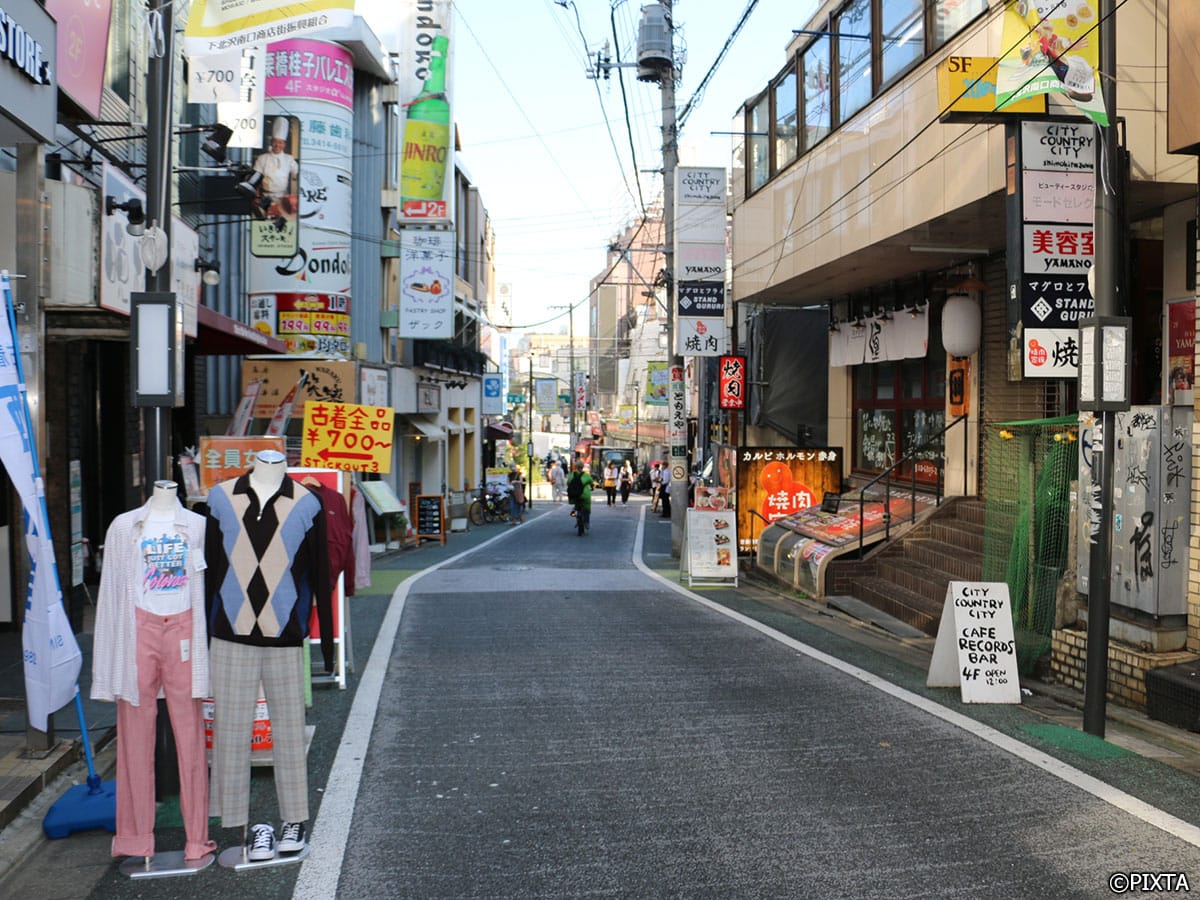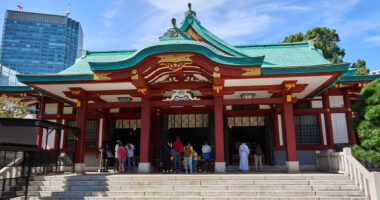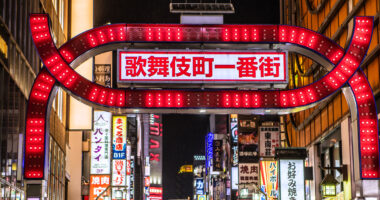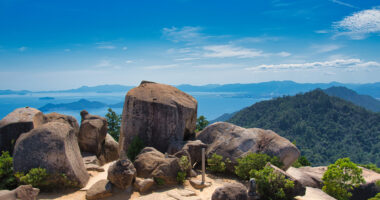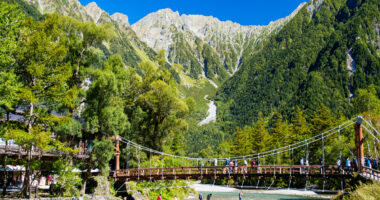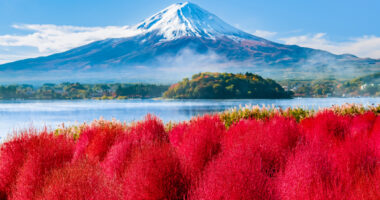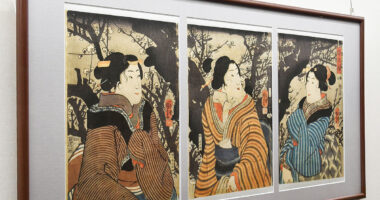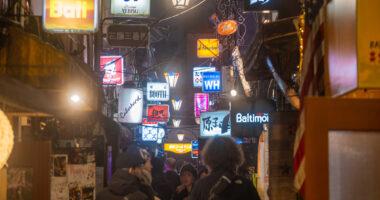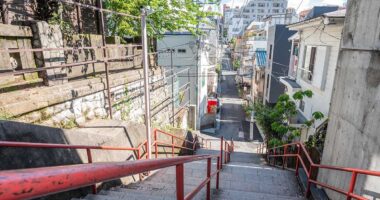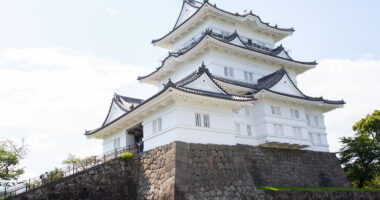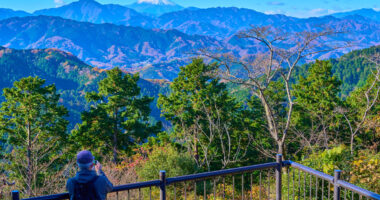Tokyo’s skyline is defined by two standout structures: Tokyo Tower and Tokyo Skytree (officially stylized in English as “TOKYO SKYTREE”). Both showcase sweeping views of the city, but the experiences they deliver are far from the same. For first-time visitors—or anyone trying to make the most of limited time—choosing between them can be surprisingly tricky. This guide breaks down what sets them apart to help you decide which tower gives you the better vantage point for your Tokyo trip.
Height and views: what you’ll see
The most obvious difference between Tokyo Tower and Skytree is height, which directly influences what you’ll see from the top.
Tokyo Skytree
At a staggering 634 meters (2,080 ft), Tokyo Skytree is the tallest structure in Japan and the tallest free-standing tower in the world. It has two observation decks: the Tembo Deck at 350 meters (1,148 ft) and the Tembo Galleria at 450 meters (1,476 ft). From this height, the city stretches endlessly in every direction. On clear days, you can spot Mount Fuji to the west, the Boso Peninsula to the east, and even the distant mountains of Nikko to the north. The elevation makes the city below appear miniature, providing a striking, expansive look at the Kanto region.
Tokyo Tower
At 333 meters (1,093 ft), Tokyo Tower may be smaller, but it’s every bit as iconic. Its two observation decks—the Main Deck at 150 meters (492 ft) and the Top Deck at 250 meters (820 ft)—offer a closer, more immersive view of central Tokyo. Rather than surveying the city from afar, you’re surrounded by it. Landmarks like Roppongi Hills, Tokyo Midtown, and the Imperial Palace stand out more clearly, while the dense cluster of nearby buildings creates a dynamic, almost cinematic view of the city in motion.
Location and access
The two towers sit in very different parts of Tokyo, and the surrounding neighborhoods shape what your visit will feel like.
Tokyo Skytree
Tokyo Skytree is located in Sumida Ward, on the east side of the city. It’s part of the Tokyo Solamachi complex, which includes a large shopping mall, an aquarium, and a variety of restaurants.
Access:
Tokyo Skytree is directly connected to Tokyo Skytree Station (Tobu Skytree Line) and Oshiage Station, which serves four lines: the Tobu Skytree Line, Tokyo Metro Hanzomon Line, Toei Asakusa Line, and Keisei Oshiage Line. It’s especially convenient if you’re coming from Shibuya or Ginza via the Hanzomon Line.
Tokyo Tower
Tokyo Tower rises from Minato Ward, a central district known for its mix of offices, embassies, and upscale residential buildings. The area has a quieter atmosphere and a more traditional Tokyo feel compared to Skytree’s newer surroundings.
Access:
It’s a short walk from several subway stations: Onarimon (Toei Mita Line), Akabanebashi (Toei Ōedo Line), and Kamiyacho (Tokyo Metro Hibiya Line). While not as directly connected as Tokyo Skytree, its location makes it easy to include in a day of visiting nearby spots like Zojō-ji Temple, Shiba Park and Azabudai Hills.
Admission fees and wait times
Both towers require tickets for their observation decks, with pricing and crowd levels varying by when you go.
Tokyo Skytree
- Fees:
Entry to the Tembo Deck [350 m (1,148 ft)] costs around 2,100 JPY on weekdays and 2,300 JPY on weekends for advance tickets. There’s also an option granting access to both the Tembo Deck and the upper deck, the Tembo Galleria, for 3,100 JPY on weekdays and 3,400 JPY on weekends for advance tickets. - Wait times:
Lines can be long, especially on weekends, holidays, or during peak travel seasons. Booking tickets online in advance is the best way to avoid delays.
Tokyo Tower
- Fees:
Admission to the Main Deck [150 m (492 ft)] is 1,500 JPY. For the Top Deck Tour, which includes access to both decks, tickets start at 3,300 JPY (advance reservations recommended). - Wait times:
Generally shorter than at Skytree, particularly for the Main Deck. The Top Deck Tour requires a reserved time slot, so it’s best to book early if you’re visiting during busy hours like sunset or weekends.
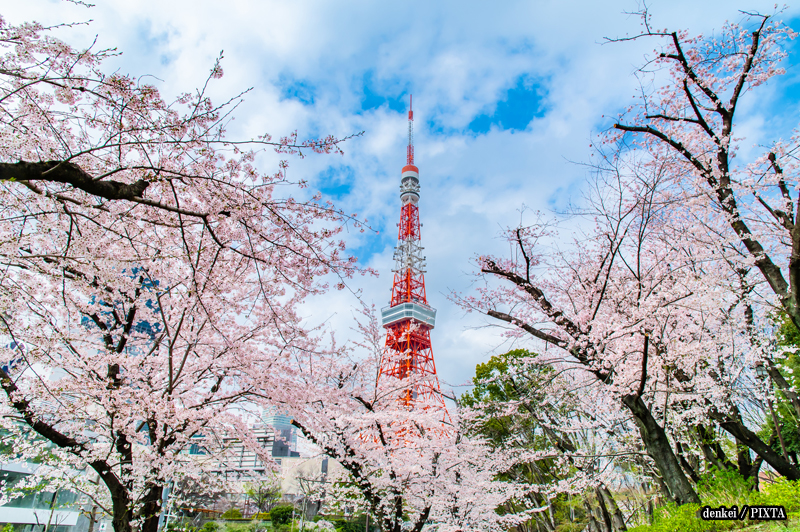
Photo for illustrative purposes
Architecture and atmosphere
The design and interior layout of each tower shape how the visit feels, both visually and experientially:
- Tokyo Skytree:
Tokyo Skytree was built with a bold, futuristic design that sets it apart from older landmarks. Inside, the emphasis is on space and visibility. The observation decks are expansive, with large glass panels that open up sweeping views of the city. The Tembo Galleria features a spiraling walkway that gradually ascends along the outer edge of the tower, adding a sense of motion as you climb. Outside the tower, the attached Solamachi complex draws crowds with its shops, restaurants, and attractions, giving the surrounding area a bustling, high-energy vibe. - Tokyo Tower:
Inspired by the Eiffel Tower, Tokyo Tower has a bold orange-and-white lattice frame that feels more nostalgic than futuristic. The observation decks are smaller, creating a more enclosed and personal viewing experience. You’ll also find small touches like the “Skywalk Window”—a section of glass floor on the Main Deck—for a direct view of the street below. Completed in 1958, the tower carries a sense of legacy as a postwar symbol of Japan’s recovery and growth, lending it a historical weight that sets it apart from the ultra-modern Skytree.
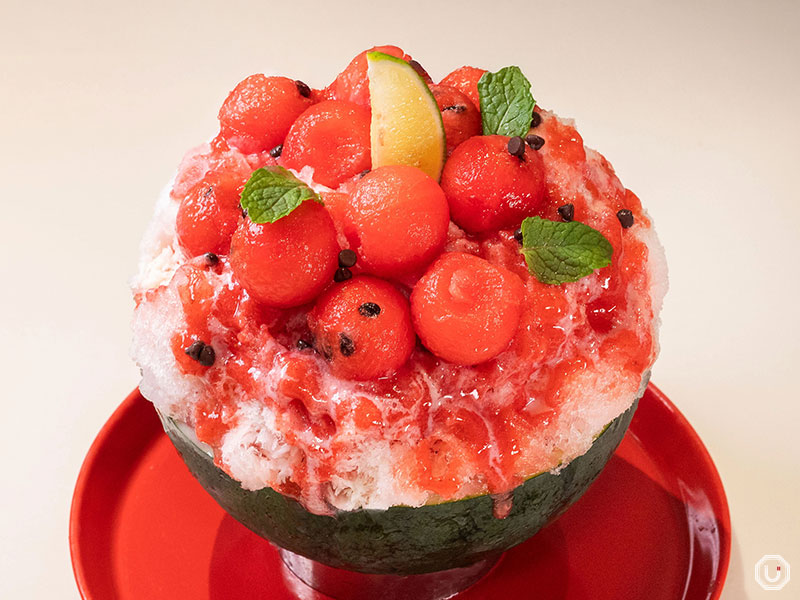
Whole Watermelon Shaved Ice at Horiuchi Fruit Farm TOKYO Solamachi
Best for photos, romance, or families?
Depending on what you’re looking for, each tower has its own strengths:
Best for photos
- Tokyo Skytree:
Best for expansive aerial shots that show the full scale of Tokyo. On clear days, you can capture distant features like Mount Fuji or Tokyo Bay. - Tokyo Tower:
Ideal if you want skyline photos that include the tower itself (you can’t photograph Tokyo Skytree from Tokyo Skytree). The lower height also means buildings are closer and more detailed, giving the skyline more depth and definition.
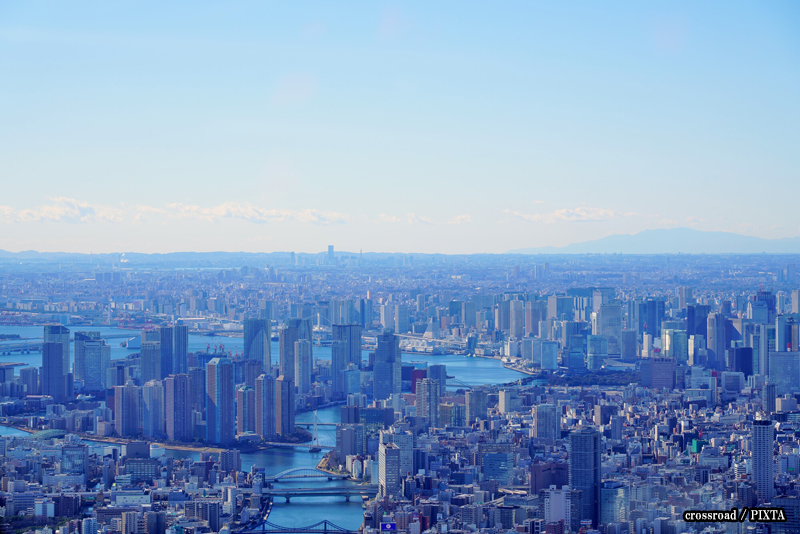
Photo for illustrative purposes
Best for romance
- Tokyo Skytree:
The scale is impressive, and the views are dramatic, which can work well for big gestures or special occasions. But the mood leans more grand than cozy. - Tokyo Tower:
The softer lighting, smaller spaces, and nostalgic atmosphere often appeal to couples. Evening visits feel more intimate, especially during seasonal events like the “Tokyo Tower City Light Fantasia” projection mapping.
Best for families
- Tokyo Skytree:
The attached Solamachi complex makes it easy to turn a visit into a full-day outing. There’s an aquarium, kid-friendly restaurants, and plenty of places to explore before or after heading to the decks. With so many all-ages attractions in one place, it’s a truly versatile option for families. - Tokyo Tower:
Its central location, close access to attractions like Zojō-ji Temple and Shiba Park, and more manageable size make it a practical choice for families with younger children who may tire easily. The “Foot Town” area at the base also includes souvenir shops and a food court. Older kids and teens may also enjoy RED° Tokyo Tower, a digital entertainment complex with VR games and esports attractions.
Tokyo Tower vs. Tokyo Skytree: quick comparison table
| Category | Tokyo Skytree | Tokyo Tower |
|---|---|---|
| View | Panoramic views of the Kanto region; Mount Fuji and Tokyo Bay visible on clear days | Closer view of central Tokyo; landmarks feel more dynamic and immersive |
| Height | 634 meters (observation decks at 350 m and 450 m) | 333 meters (observation decks at 150 m and 250 m) |
| Admission fee | 2,100-3,400 JPY (additional cost for same-day tickets) | 1,500–3,300 JPY (top deck tour requires reservation) |
| Crowd level | Often very crowded, especially on weekends and at sunset | Generally less crowded; top deck requires advance booking |
Best tower by purpose: recommendation table
| Purpose | Recommended tower | Reason |
|---|---|---|
| Panoramic views | Tokyo Skytree | Unmatched height offers wide views across Tokyo and beyond |
| Closer urban experience | Tokyo Tower | Better proximity to central Tokyo landmarks, more immersive feel |
| Photography | Both | Tokyo Skytree for aerial-style shots; Tokyo Tower for skyline photos including itself |
| Romantic date | Tokyo Tower | Intimate atmosphere, nostalgic lighting, and evening events |
| Family outing | Tokyo Skytree | Solamachi complex, aquarium, and dining make it great for a full-day trip |
| Short visit | Tokyo Tower | Quick access, shorter lines, and easier to fit into a busy itinerary |
Final thought: choose the best spot for your trip
There’s no single winner—each tower reveals a different side of Tokyo. Tokyo Skytree is all about scale and spectacle: wide aerial views, cutting-edge architecture, and enough attractions to fill a day. Tokyo Tower, by contrast, provides a more grounded experience, with shorter waits, a more compact layout, and a stronger sense of Tokyo’s history. What you choose says less about which is better, and more about how you want to engage with the city itself.
